History of Birr and Places of Interest:
Birr is situated in the heart of Ireland and is part of Ireland’s Ancient East. You will not be disappointed by visiting Birr and we look forward to seeing you soon.
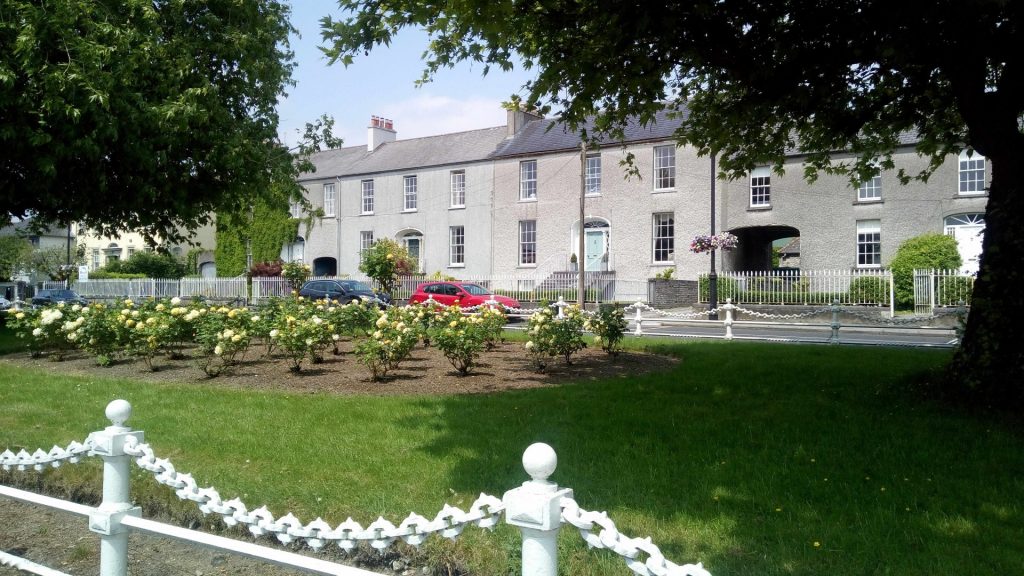
Georgian Birr
Birr has been designated a Heritage Town for the quality, preservation and distinctive character of its Georgian architecture and ambience. Georgian Birr started to take shape in the 1740s when Emmet Square and Emmet St. (then Cumberland Square and Cumberland Street) were developed to the north of Main St. Town squares were then in fashion and so were houses in the Georgian style, influenced by the Italian architect Palladio whose distinctive style of architecture can be found in places as far apart as America, Italy, India, Birr, Bath, Dublin and Leningrad.
CÁIN ADOMNÁIN
Cáin Adomnáin (697) was a Brehon law which prohibited the killing of women and other non-combatants and forbade their use in warfare. It imposed penalties for rape, sexual harassment and other offences against women and against children and clerics. Adomnán was one of Colmcille’s successors as abbot of Iona from about 679 to 704 AD and both men were descended from the powerful Northern Uí Néill. Adomnán had sufficient prestige to assemble a conference of ninety-one powerful chieftains and clerics at Birr to promulgate the new law.

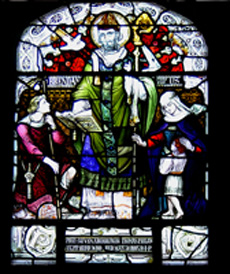
Saint Brendan The Elder
It appears that a life of St. Brendan of Birr has been lost but he is mentioned in several medieval manuscripts and his death in 572 AD is recorded in the Irish Annals. He is known as St Brendan the Elder to distinguish him from his contemporary and friend St Brendan the Navigator.
ELY O’CARROLL
Most of the territory of South Offaly was once known as Ely O’Carroll or Eile Ui Chearbhaill which meant Eile of the O’Carrolls. The Uí Chearbhaill (O’Carrolls) were a formidable dynasty, a branch of a more ancient people called the Éile whose territory came to be divided between the Uí Fhógartaigh (O’Fogartys) and the Uí Chearbhaill (O’Carrolls).

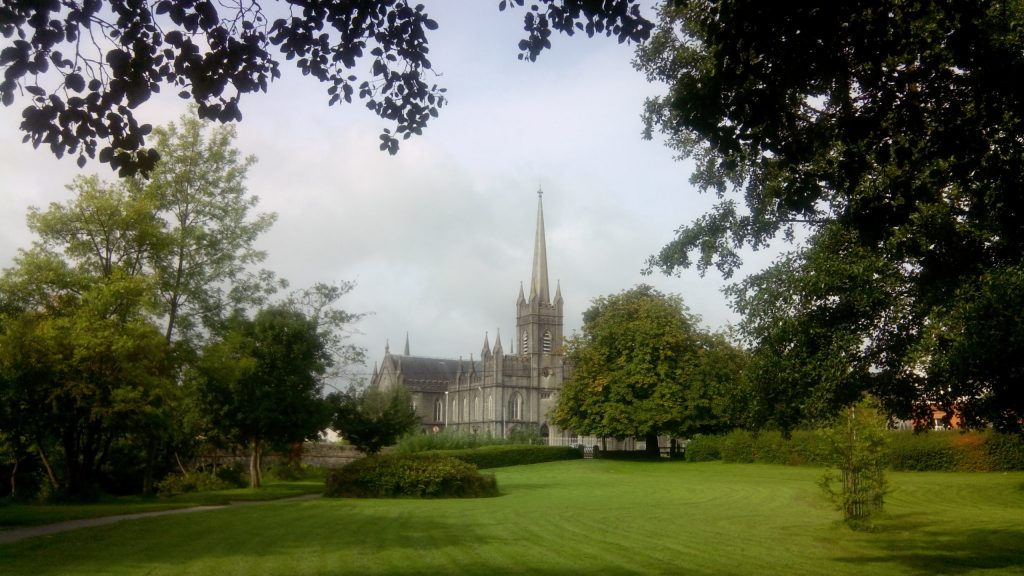
Birr Churches
In an attractive setting beside the convent buildings, an old bridge, the Riverside walk, a bend in the River Camcor and a weir, St Brendan’s Roman Catholic Church, is a fine Gothic building. It was designed and built by Bernard Mullins, work commenced in 1817 and the church was opened in 1826. The excellent acoustics are well appreciated in a town with a very fine choral tradition.
Places of Interest in Birr:
Macregol Gospel
The Macregol Gospel Book is a manuscript copy of the Four Gospels made about 800 AD. It consists of 169 vellum folios (leaves) about 345mm high and 270 mm wide. The script used is a formal one called insular majuscule or insular half-uncial and it somewhat resembles one of the hands of the Book of Kells. A translation or gloss in Old English cursive script was inserted between the lines about a thousand years ago. A facsimile of the Macregol Gospels is on permanent display free of charge in the magnificently restored Pugin-designed in Birr Town Library.
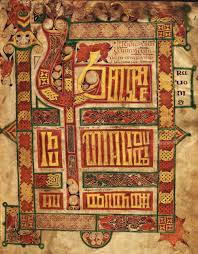

BIRR CIVIC OFFICES & LIBRARY (WP PUGIN-DESIGNEDCONVENT BUILDING)
One of the gems of Birr architecture, this lovely Gothic building was designed by Augustus Welby Pugin and built in stages from 1845-56. Catherine McAuley, foundress of the Sisters of Mercy, had come in person in 1840 to help her sisters set up a foundation in Birr to be called St. John’s Convent of Mercy. Pugin had French ancestors and visited France to study Gothic art so the little turret near the church may have been inspired by French chateau architecture or by Irish round towers or both.
Birr Workhouse
An example of the original pre-famine Irish workhouses designed by George Wilkinson, Birr Workhouse was relatively unaltered, being used mostly for light industry after it was closed in 1921. However, deterioration is setting in and a plan is urgently needed. Opened 1842 as Parsonstown Union Workhouse, closed 1921. One of only 9 Irish Poor Law Unions whose records were analysed for the National Famine Research Project in the 1990s. Educational potential is immense. Myths abound about workhouses and should be challenged with experience and facts. Potential to interpret aspects of politics, local government, poverty, welfare, medicine, education, emigration, administration, 1842 to 1921.
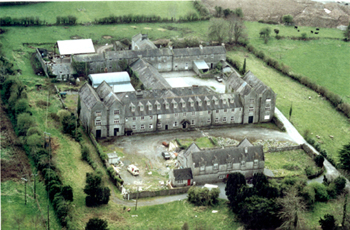

Saint Brendan’s Graveyard
Birr is well known for its Georgian streetscape, mighty telescope and castle, however it might be a surprise to learn of the number of burial grounds to be found in and around the town. A total of nine burial grounds can be found within a short distance of the town. This graveyard contains the ruins of old parish church of Birr, which was used up until 1816, when it was replaced by the new St Brendan’s church which was built on Oxamantown Mall. The burial ground which surrounds the church ruins has been used for centuries by the town’s people of Birr. It was in the early to mid 19th century when the burial ground began to become over crowded and a solution had to be found.
Crinkill Barracks
The village of Crinkill developed around the barracks. The 1798 Rebellion and subsequent fears of another French invasion of the west of Ireland led to fortification of the line of the River Shannon and Birr was selected as a site for a barracks because it was within a few hours march from Banagher and other fortifications on the river. Building of the barracks at Crinkill began in 1809 and was completed in 1812. The complex could accommodate over 1,200 men and 500 more under canvas and eventually included a chapel, school, its own gasworks, gym, and graveyard. The Leinster Regiment, formed in 1881, had their depot here. The barracks were handed over to the Irish Free State on 13 February 1922 and were burned down by Repubican forces on 14 July 1922. Little now survives at Crinkill except most of the perimeter wall and the graveyard.
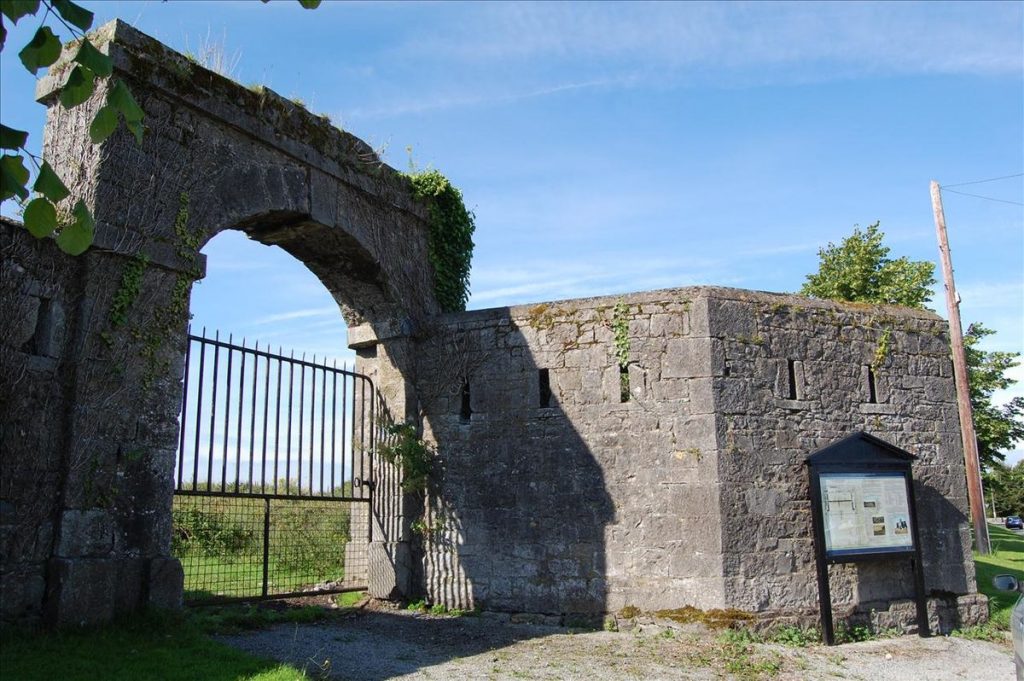

First All Ireland
The first ever All Ireland Hurling Final was played in Birr on Easter Sunday, 1 April 1888 to decide the All Ireland Championship for 1887. Tipperary was represented by Thurles and Galway by Meelick and the referee was Birr business man Patrick White. Birr was convenient, accessible and neutral for the two teams and special trains carried crowds, including the Tipperary team to the train station which serviced Birr from 1858-1963.
Market Square
The village of Crinkill developed around the barracks. The 1798 This is the oldest part of the town. The Market Square developed at the point where the road leading from Munster to Main Street intersected with Castle Street which led to the Old Church and Birr Castle. A market house in the square became derelict or redundant and the site is now marked by a statue of the Maid of Erin with cross, harp and hound dog. Erected in 1894 and unveiled by Jeremiah O’Donovan Rossa, it commemorates the Manchester Martyrs executed in 1867 and one of whom, Michael Larkin, came from nearby Lusmagh.

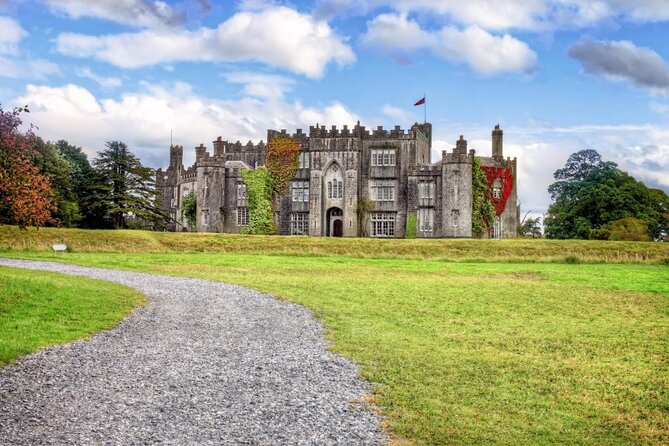
Birr Castle
The Award-Winning Gardens of Birr Castle Demesne in Ireland are both rich in amazing feats of science and engineering, as well as rare trees and flowers, wonderful wildlife, walks along peaceful rivers and the lake. Celebrating 400 years in 2021, this remarkable family have resided at the romantic and inspirational setting of Birr Castle Demesne, that is now home to the 7th Earl of Rosse. Created over generations it is an environmental and a scientific time capsule..